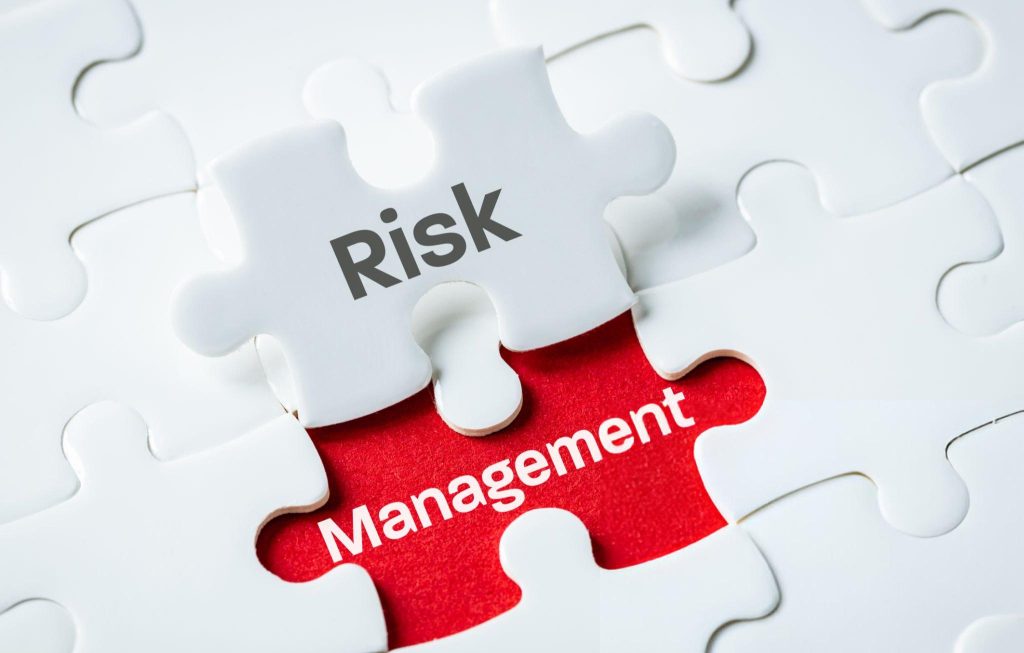Mastering Asset Allocation Strategy for Investor Success

Key Highlights
- Learn why asset allocation is the most important decision in building a successful investment portfolio.
- Explore how risk tolerance, time horizon, and financial goals influence the ideal mix of assets.
- Gain insights into various asset classes such as stocks, bonds, real estate, and cash equivalents.
- Discover strategies for aligning your asset allocation with dynamic risk profiles to achieve higher returns.
- Understand the importance of portfolio diversification and regular monitoring to reduce potential losses.
- Benefit from sample portfolios tailored to conservative, moderate, and aggressive investors.
Introduction
Building a secure financial future starts when you learn about asset allocation. This helps your investment portfolio fit your risk tolerance and your goals for the long run, while looking at market conditions. When you add various asset classes in a careful way, you are able to get higher returns and manage risk at levels that are right for you. In this guide, we will show how to make a plan that fits you, by balancing stocks, bonds, and other investments so they match your own goals and risk profile. Let’s see how using strategic asset allocation helps you make better investment choices.
Understanding Asset Classes and Risk Profiles

Every investor has to pick the right investments to meet their financial goals. If you understand the basics of each asset class and know your own level of risk, you can make smart choices for your portfolio. Think of an asset class like stocks, bonds, or real estate as a building block. Each one carries its own level of risk and reward. When you put them together the right way, they fit with your comfort level for risk. This gives you a balanced setup that matches your investment goals.
Your risk profile shows how much risk you are willing to take. This will help you figure out if you should take bigger risks or play it safe when making decisions about asset allocation. With these points in mind, let’s look at what every asset class is and what makes each one different.
What Are Asset Classes?
Asset classes are main groups of investments that have similar features. Each asset class reacts in its own way when market conditions change. When you build a balanced portfolio, you often use various asset classes to help lower risk and make your investments more steady. For example, stocks can give higher returns, but there is more risk. They show your ownership in a company and can go up or down depending on business and the economy.
Bonds are different. They come with lower risk and happen when people loan money to a government or company. Bonds are seen as steady because they give a regular interest income over time. Cash equivalents, like savings accounts, CDs, or money market funds, have the lowest risk and can be turned into cash fast. This makes them a good choice for short-term financial goals.
Another asset class is real estate. It means owning property to make money from renting or for long-term value to go up. Still, it can be hard to turn real estate into cash fast. When you know about these basics, you can use them to set up a good plan for your portfolio and get the right mix of growth and safety.
Types of Asset Classes: Stocks, Bonds, Real Estate, and More
Each asset class has its own role in an investment portfolio. They give different kinds of benefits and come with their own risks:
- Stocks: Companies sell shares to give people part ownership. Stocks can give higher returns if things go well, but the value can also change a lot because of market fluctuations.
- Bonds: Bonds are safer compared to stocks. They promise to pay back your money and give regular interest. Bonds are good for people who want to earn income from their investments.
- Real Estate: Real estate can bring in money from rent or can go up in value over time. It is something you can see and touch, but it may be hard to sell it quickly.
- Cash Equivalents: This group has things like savings accounts, CDs, and money market funds. They give safety and are great if you want to take less risk and need fast access to cash.
Looking at each asset class helps you put together an investment portfolio that matches your financial goals. You can pick options that keep the risk level where you want it. By understanding where these tools fit, you are more likely to see good results and higher returns over time.
The Importance of Aligning Asset Allocation with Risk Profiles

To be successful in investing, it is important to match how you set up your portfolio with the way you handle money. Asset allocation means how you split your money over different types of investments. It is key in making a plan. Getting this part right helps balance the risk and rewards you will get. Some people go for more risky choices to try and grow their money fast. Others want to play it safe. To get a good result, your investment objectives should fit with your risk profile.
Knowing how your risk tolerance changes your asset allocation will help you build a portfolio that lines up with your financial goals. Let’s talk more about why risk tolerance is so important and see how the type of allocation you pick changes your returns.
Why Risk Tolerance Matters in Investing
Your risk tolerance is about how much you can deal with not knowing what returns you will get. If you want to play it safe, you might like putting your money in things like bonds or CDs. These usually have lower risk. They also give you lower returns, but they help cut down on possible losses. On the other hand, if you have a higher risk tolerance, you may go for stocks or private equity. These can give you higher returns, but the market can go up and down a lot.
It’s important to find the right mix for you. If you put money in assets that do not match your risk tolerance, you may feel stressed. You could end up selling when the market is down, which is not good. People who want higher returns have to know that taking bigger risks may sometimes mean losing money for a short time. Still, it can help your money grow more over many years.
Knowing how much risk you can handle helps you adjust your portfolio. This makes it easier to keep a good mix between chances to make money and keeping your money safe. Being ready for both good and bad times in investing will help you stick with your long-term goals.
How Asset Allocation Impacts Investment Outcomes
Asset allocation has a big effect on your returns, how much risk you take on, and how safe your portfolio is. If you mix your investments in the right way, you protect yourself from market shifts and lower the chance of having big losses. For example, if you put money into stocks for higher returns and also into safer choices like bonds, you create more stability.
Picking the right asset allocation helps keep your portfolio safe while you go after your financial goals. If you use aggressive plans, your gains might go up, but so will the risks. A conservative plan will reduce risk, but your growth will slow down. When you match how you invest with how much risk you can handle, you build a strong base for long-term success.
Smart investors know asset allocation is not just something you do once. You need to adjust your investments from time to time. By rebalancing regularly, you keep your risks in check and make sure your plan matches your goals, no matter how market conditions change. This way, you stay on track to reach your financial goals and limit significant losses.
Identifying Your Investor Risk Profile
Your risk profile shows how much risk you are willing to take and how well you can handle changes in the value of your investments. There are different types: conservative, moderate, and aggressive. Each type shows a different level of risk tolerance and financial way of planning. To find out your risk profile, you need to think about things like your financial situation, your investment goals, and how much time you have to reach those goals.
When you know your risk profile, you can see how much risk is right for your asset allocation plan. Next, we will look at the common types and see what things help shape them.
Common Risk Profiles: Conservative, Moderate, Aggressive
Investors align their goals with risk profiles, often falling into these categories:
| Category | Characteristics | Example Allocation |
|---|---|---|
Conservative | Low risk, income-focused, preserves capital | 70% bonds, 20% cash, 10% stocks |
Moderate | Balanced approach to growth and income | 50% stocks, 40% bonds, 10% real estate |
Aggressive | High-risk aim for capital appreciation | 80% stocks, 10% real estate, 10% fixed income |
These profiles reshape your portfolio around goals and risk tolerance. Understanding the differences is essential to building strategies that cater to individual needs.
Factors That Influence Your Risk Profile
Several things shape your investor risk profile. These include:
- Financial Situation: If you have steady income or good savings, you may be able to take on higher risk.
- Time Horizon: If you have a long time before you need the money, you can use a bold plan to try for bigger returns.
- Investment Goals: If your goal is to save for your children’s schooling or to stop working early, that will affect what mix of assets is right for you.
- Current Income: If you make more or have money left over after expenses, you can handle potential losses more easily.
All of these matter for how much risk is right for you and your goals. Looking at them helps you put together a portfolio that gives the returns you want and fits your plan.
Beginner’s Guide: Getting Started with Asset Allocation
Getting started with asset allocation does not have to be hard. It helps to follow a rule of thumb. You can do this by splitting your mix of investments between stocks and safer things like bonds. This is a good place to start.
You can make changes to your mix of investments so it fits your goals and how long you want to keep your money invested. When you are clear about your plan, it gets even easier.
Now that you know the basics, let’s look at some tools, ideas, and resources you can use as you begin to build your own portfolio. With these steps, you can make sure your asset allocation grows in a way that works well for you. This way, you do what is best for your money and for your future.
What You Need to Begin: Tools and Resources for Asset Allocation
Navigating asset allocation can be simpler if you have the right tools and resources. Financial planning software is good to use. It helps you look at different scenarios and see your investment portfolio change over time. You can also go online to find places that teach you more about various asset classes. These sites help you better understand market conditions and think about your investment objectives.
Talking to a financial advisor is also helpful. The advisor will get to know your risk tolerance and give advice that fits your needs. This way, you can make a diversified portfolio that works well with your financial goals. Having these things can help if you want to build a better investment strategy. You will also have more knowledge to make better choices about your money.
Key Concepts Every Beginner Should Know
Understanding asset allocation is important for anyone who wants to invest. This is not a one-size-fits-all thing. It includes different types of things to invest in. Some of these are stocks, bonds, real estate, and cash equivalents. Each one has its own level of risk and return. You should know about your risk tolerance and time horizon. This will help you make a good investment strategy. It is also important to tell the difference between strategic asset allocation and tactical asset allocation. This can help you handle market fluctuations. All these ideas help you build a strong and mixed investment portfolio with various asset classes.
Step-by-Step Guide to Allocating Asset Classes Based on Your Risk Profile
Understanding your risk profile is very important when you are thinking about asset allocation. Start by looking at your financial goals and the time you have to reach each of them. Next, think about your risk tolerance. This means knowing how much market fluctuation you can take without feeling too worried. With all this, pick a mix of asset classes like stocks, bonds, and cash equivalents. This balance will help you get good returns while not going over your comfort zone. Keep in mind, diversification matters. It helps you lower risks and makes your investment portfolio stronger.
Step 1: Assess Your Financial Goals and Time Horizon
Having a clear idea of your goals with money is key to doing asset allocation well. Think about your own investment goals. Are you wanting long-term growth, or are you looking for quick gains? Your time horizon—if you plan to invest for just a few months or for years—will play a big role in your investment strategy. People who want higher returns and have an aggressive approach will often go for more stocks. If you are careful, you might want to keep your money more stable by using cash equivalents and bond funds. Make sure your risk tolerance matches your time frame. This is the first thing to do to build a balanced investment portfolio that can work for you.
Step 2: Determine Your Risk Tolerance
Identifying your risk tolerance is important for your investment strategy. Risk tolerance is about how much change in the value of your investment portfolio you can handle. It also affects your long-term financial goals. You need to think about a few things, like your time horizon, your financial situation, and your own level of risk.
You can use questionnaires or talk to a financial advisor to learn more about your comfort with market changes. It is important to be honest about what you can take, so you can set up a good asset allocation that matches your investment objectives. This way, your strategic asset allocation can.
Step 3: Choose an Appropriate Asset Mix
Choosing the right asset mix is important. You need to think about your own risk tolerance and what your financial goals are. When you build a diversified portfolio, you want to include a mix of various asset classes. This could be stocks, bonds, and cash equivalents. It’s best to match the portfolio to your own investment objectives.
If you are an aggressive investor, having more equities might give you the chance for higher returns. But if you are not ready to take that much risk, or if your risk tolerance is lower, a more balanced portfolio could help. This mix uses lower-risk investments and suits people who like to play it safe.
By using strategic asset allocation, you can manage your portfolio better. This helps match your choices to the level of risk you are okay with and your time frame. In the end, picking the right asset allocation lets you try for your financial goals and stick with your own needs.
Step 4: Diversify Across Asset Classes
A good way to manage risk and boost gains is to have a well-diversified portfolio. By spreading your money over various asset classes like stocks, bonds, real estate, and cash equivalents, you can help protect your investment portfolio from market fluctuations. These asset classes do not all move the same way when the market changes. Because of this, your investments can be more stable and also work towards your financial goals.
It’s smart to think about a dynamic asset allocation for your investment strategy. This means you change your mix of asset classes over time, depending on your risk tolerance and time horizon. With this plan, you get a good way to balance growth and safety for your new and old investments. This helps you and us reach our goals while handling risk.
Step 5: Monitor and Rebalance Your Portfolio Regularly
Keeping an eye on your investment portfolio and making changes now and then is important. This helps you stay on track with your target asset allocation. As market conditions change, your original mix of assets can shift. This can change your level of risk and what you might get back. When you check your investment portfolio often, you make sure it still matches your financial goals and fits your risk tolerance.
Using investment tracking apps can help you with this. These tools make it easy to look at your mix of assets and adjust what you have in different asset classes. If you take time to check your position from time to time, you give yourself a better chance to get good results and meet your goals.
Practical Examples of Asset Allocation by Risk Profile

Different kinds of investors need their own asset allocation. This is because everyone has their own financial goals and risk tolerance. If you are a conservative investor and want to keep your money safe, you may want to put more into bonds and cash equivalents. These can be things like treasury bills or money market funds.
Aggressive investors usually want bigger returns. They may put more money into a mix of stocks and mutual funds. This means they accept bigger risks and more ups and downs.
Moderate investors often like a mix. They can choose a balance of stocks, bonds, and some other types of investments. This way, they manage risk but still work toward good growth.
Sample Portfolios for Conservative, Moderate, and Aggressive Investors
Building sample portfolios needs a clear understanding of the level of risk people want to take. Conservative investors usually go with cash equivalents and bond funds. They look for safety and want to keep their money stable.
Moderate investors may go with a mix that includes stocks and mutual funds. They want higher returns, so they are okay with some risk.
Aggressive investors often put more money into things that have a higher level of risk, like equities and private equity. They do this because they want bigger growth, even if there is a chance of significant losses.
Changing these mixes helps with better portfolio management. This way, people can meet their own investment goals.
Conclusion
Building a good investment strategy starts by thinking through your asset allocation. You need to choose what you put your money in, based on your risk tolerance. It is important to know how your risk tolerance works with different types of asset classes. This is how you build a diversified portfolio.
You should always keep an eye on your investments. Make changes when market conditions shift. This helps you protect yourself from potential losses and keeps you moving toward your financial goals.
As you go on this investment journey, remember to ask for help if you need it. A financial advisor can guide you. They can help you match your asset allocation to your investment objectives and your true risk appetite. This will keep you on track to reach your goals.
Frequently Asked Questions
How often should I review my asset allocation?
Checking your asset allocation often is important. You should do this every six months to a year. But, if you have big life changes like getting a new job or a big cost, you need to look at it right away. This will help make sure your asset allocation still fits with your financial goals and how much risk you want to take.
What are the most common mistakes beginners make in asset allocation?
Many new investors often make some basic mistakes with asset allocation. One big mistake is putting too much money in one asset class and not enough in others. Some people forget how important it is to spread out their investments, which is called diversification. It is also common to overlook your own risk tolerance and not adjust your investments for it. Some do not rebalance their portfolios now and then, so their mix of investments does not stay on track. Others start investing without a clear financial goal or knowing their time horizon. If you know about these common problems, you can get much better results with your investment decisions.
Can my risk profile change over time?lish a Master Feeder Fund in Luxembourg?
Yes, your risk profile can change as time goes on. Things like life events, changes in your money situation, or what is happening in the market can all have an effect. It’s a good idea to check your risk tolerance often. This way, your investment strategy will stay in tune with your goals and what is happening in your life or in market conditions.
Is it necessary to hire a financial advisor for asset allocation?
You do not always need a financial advisor for your asset allocation, but they can help you a lot. The advisor can make plans that fit your risk level and what you want. If you are new to this or do not have much time, a financial advisor can be a big help. They can show you the way and help you avoid mistakes that might cost you money.
What are the different asset classes available for investment?
The main things you can invest in are stocks, bonds, cash and cash equivalents, real estate, commodities, and other kinds of investments. Each of these comes with its own features. They are good for different kinds of risk and ways of investing your money. If you know about these, you can make your investments more varied and safer.
How can I determine my risk profile as an investor?
To find out your risk profile as an investor, you need to look at your financial goals, the time you plan to invest, and how at ease you are with market fluctuations. Try using questionnaires or talk to a financial advisor. This can help you understand your risk tolerance and which different asset classes may be right for you.
What factors should I consider when allocating asset classes in my portfolio?
When you pick asset classes, think about your financial goals, your risk tolerance, how long you want to invest, and the market conditions. Also, look at how asset classes move with each other. This can help you spread out your money, lower risk, and make sure your investment strategy is the right fit for you.
How often should I reevaluate my asset allocation based on changes in my risk profile?
You should look at your asset allocation at least one time every year. You should also do this when you have a big life event. This can be a new job, getting married, or retiring. Doing these regular checks helps you know that your money plan still fits the way you feel about risk and your financial goals. This is a good way to make sure your investments work well for you over time.


